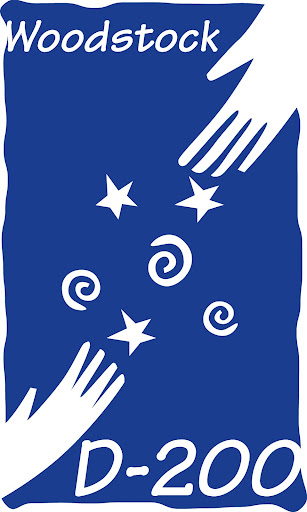 In this spotlight, we learn from Jacki Carrasco, Director of Elementary Curriculum at Woodstock Community Unit School District 200 in Woodstock, IL. Begun as a Response to Intervention initiative, Woodstock’s SIPPS implementation is supported by the district’s engagement with professional learning around the science of reading and LETRS training.
In this spotlight, we learn from Jacki Carrasco, Director of Elementary Curriculum at Woodstock Community Unit School District 200 in Woodstock, IL. Begun as a Response to Intervention initiative, Woodstock’s SIPPS implementation is supported by the district’s engagement with professional learning around the science of reading and LETRS training.
Tell us a little about yourself, your district, and the students you serve.
My name is Jacki Carrasco. I am the Director of Elementary Curriculum for Woodstock Community Unit School District 200 in Woodstock, IL. I have been an educator for 17 years. Before becoming an administrator, I taught first grade and was a reading specialist and an RTI facilitator.
Woodstock is a consolidated preK–12 school district. We serve a diverse population of students, and about fifty percent of students are enrolled in our dual language program. There are six elementary schools and one early learning center in the district; all of them use SIPPS.

What is the most rewarding part of being an educator for you?
The most rewarding part of being an educator for me is watching students and staff grow. I am a lifelong learner myself, and I love to see the joy in people as they learn something new.
Being part of a district that is passionate about making sure all students learn to read, so they can be the most successful in their future, is extremely rewarding.
How did Woodstock become interested in SIPPS?
As a district, we embarked on a study of the science of reading at about the same time that we discovered SIPPS. We visited a neighboring district that was already implementing SIPPS and seeing great success with students. We were impressed with the way it aligned with our learning about the science of reading.
How long has your district been implementing SIPPS? Tell us a little about the implementation.
Our district has been implementing SIPPS for about three years. Based on the results of a universal screener, the SIPPS placement test is given to any student who is below benchmark. Any student who needs SIPPS is able to receive it.
We are able to accomplish this through an “all hands on deck” approach. Two reading interventionists in each building support implementation, along with RTI associates and paraprofessionals, as well as classroom teachers. Professional learning supports are provided by the district’s interventionists and/or coaches.
What do you appreciate about SIPPS? What do Woodstock teachers appreciate about it?
SIPPS has a great lesson structure that is easy for teachers to follow and is aligned with the science of reading. The resources that SIPPS provides are extremely helpful. For example, the “entry point” lessons in each level of SIPPS include explicit instructional guidance around routines, corrective feedback, etc.
It’s helpful to have both print and digital resources available. Teachers appreciate QR codes they can scan to access short videos that describe a particular routine or instructional strategy. Before the pandemic, we were able to provide Collaborative Classroom’s in-person professional learning opportunities to teachers to launch implementation. In addition, Collaborative Classroom offers virtual webinars and other events to support ongoing learning.
SIPPS has a great lesson structure that is easy for teachers to follow and is aligned with the science of reading.
What have you noticed about students’ learning and engagement with SIPPS? What have teachers noticed?
We have noticed that students’ engagement levels have increased. When the students are working in SIPPS, they have the skills that are needed to attack words. This helps them to be engaged and feel successful with their reading. Students’ learning has accelerated because they learn the skills that are needed to decode unknown words.
How has SIPPS shifted teaching practices and/or professional learning in your district?
SIPPS has helped accelerate teachers’ learning about structured literacy and the science of reading approach based on tangible gains they notice in their own students. In fact, teachers began to ask to use SIPPS with a greater number of students as they saw its effectiveness.
SIPPS has also allowed teachers to put into practice many skills and strategies that they learned through LETRS professional development.
SIPPS has helped accelerate teachers’ learning about structured literacy and the science of reading approach based on tangible gains they notice in their own students. In fact, teachers began to ask to use SIPPS with a greater number of students as they saw its effectiveness.
What thoughts or insights would you share with a district that is considering SIPPS?
SIPPS is a program that not only helps students grow in their reading skills, but also provides embedded professional development for teachers. It has aligned well with our professional learning through LETRS. The script makes it easy for teachers to follow and includes all the key components a phonics lesson should include.
Start with a selected group of students and teachers using it, and its success will be evident. Then, spread the use to all students that would need and benefit from the program.
